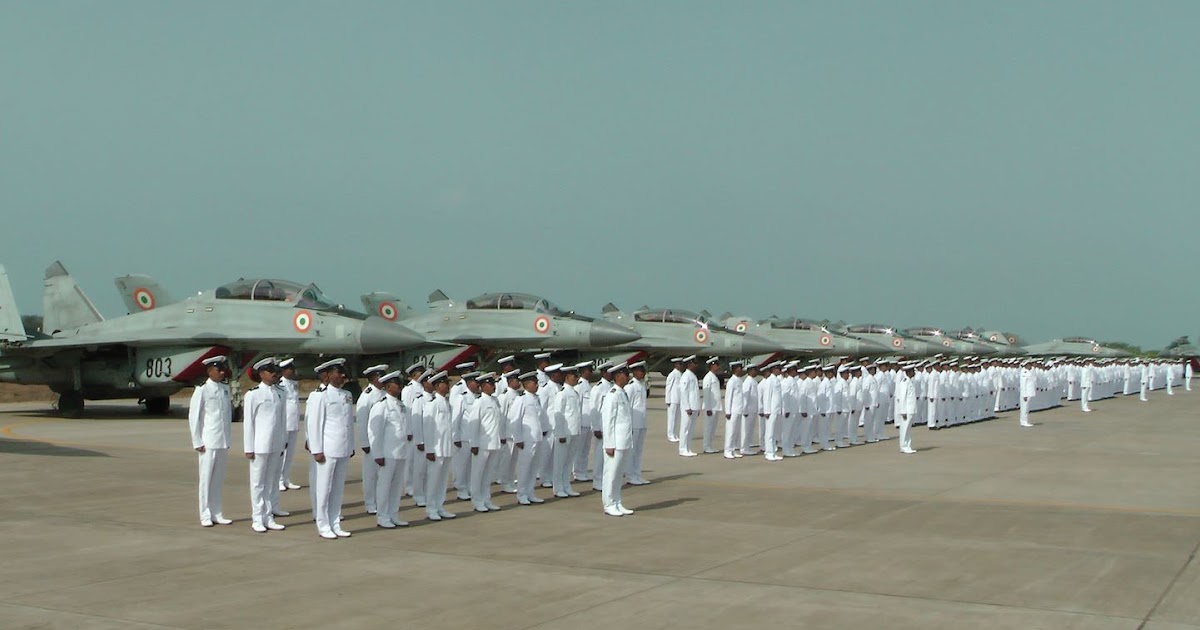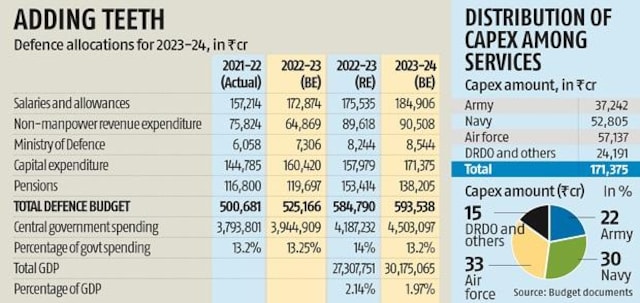
The Air Force holds the largest share of the capital budget, followed by the Navy and Army in that order
By Vikas Gupta
Defence News of India, 2 Feb 23
For the first time in decades, India’s defense allocations have fallen below 2% of nominal gross domestic product (GDP).
Out of the total Union budget expenditure of Rs 45,03,097 crore for the financial year 2023-24, the Ministry of Defense has been allocated Rs 593,373 crore. This represents 1.97% of GDP or 13.2% of public expenditure.

The defense budget includes an allocation of Rs 138,205 crore for defense pensions, which fell significantly for the first time this decade. Retirement allowance last year was Rs 153,414 crore.
The defense allocations for 2023-24 represent an improvement of Rs 68,371 crore, or 13%, over the budget allocations for 2022-23. However, if this year’s allocations are compared to the revised 2022-23 allocations, the increase is a miniscule 1.5%.
Defense capital expenditure for equipment upgrades and infrastructure development rose to Rs 171,375 crore. The government described this as a 57% increase since 2019-20. However, compared to last year’s budget allocations, capital expenditures have only been increased by 7%.
To be able to support small high-tech industries and start-ups, the iDEX (Innovations for Defense Excellence) program has been endowed with Rs 116 crore.
Defense Minister Rajnath Singh has described the Union budget for 2023-2024 as growth oriented. He said it would help make India a $5 trillion economy within a few years.
In order to keep the armed forces combat-ready, the non-wage portion of revenue expenditure has been increased by 44% from Rs 64,869 crore in the budget estimates for 2022-23; to just over Rs 90,000 crore in the coming year.
“These expenditures are expected to fill critical gaps in combat capabilities and equip forces in terms of ammunition, armaments and resources, military reserves, etc.,” the defense ministry said.
“Despite a still sluggish economy and sustained military pressure on the army following multiple intrusions by Chinese troops on the Ladakh border, the government has increased defense allocations [in] FY 2022-23 by less than 5%, compared to revised estimates for FY 2021-22 and almost 10% compared to BE 2021-22,” the MoD said.
While the 1.3million-strong army was given the lion’s share of the revenue and pension budgets, the Indian Air Force got the biggest share of the capital allocation : Rs 57,137 crore. The navy has been allocated Rs 52,805 crore, while the army will settle for the smallest investment budget: Rs 37,242 crore.
According to the Ministry of Defence, one of the main thrusts of the budget was towards strengthening infrastructure, particularly along the Sino-Indian border. For this, the capital allocation to Border Roads Organization (BRO) has been increased by 43% from Rs 3,500 crore in FY 2022-23 to Rs 5,000 crore in FY 2023 -24. The MoD says the BRO allocation has doubled in the two years since the 2021-22 financial year.
“This will strengthen border infrastructure, creating strategically important assets like the Sela Tunnel, Nechiphu Tunnel and Sela-Chhabrela Tunnel,” the Ministry of Defense said in a press release.






